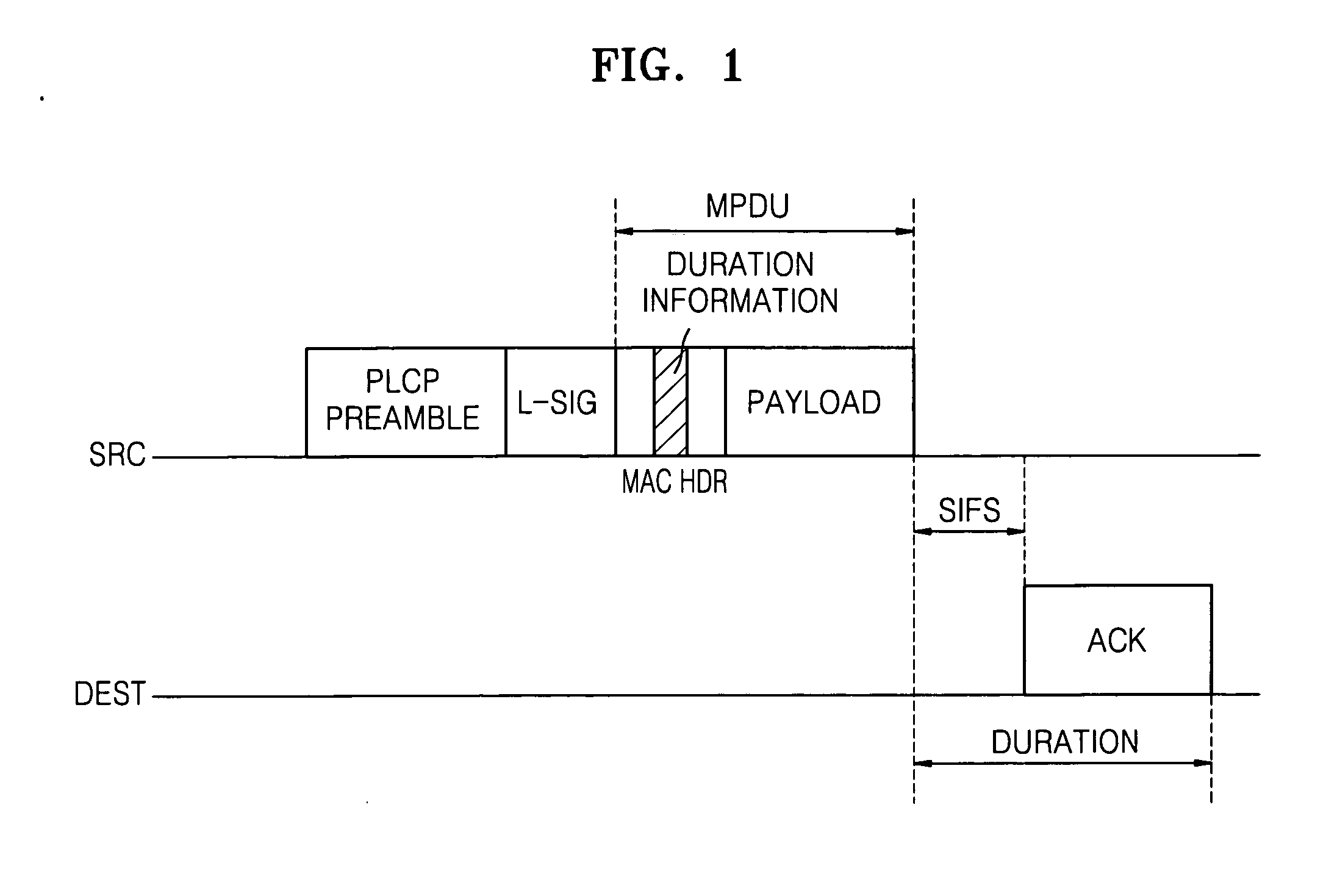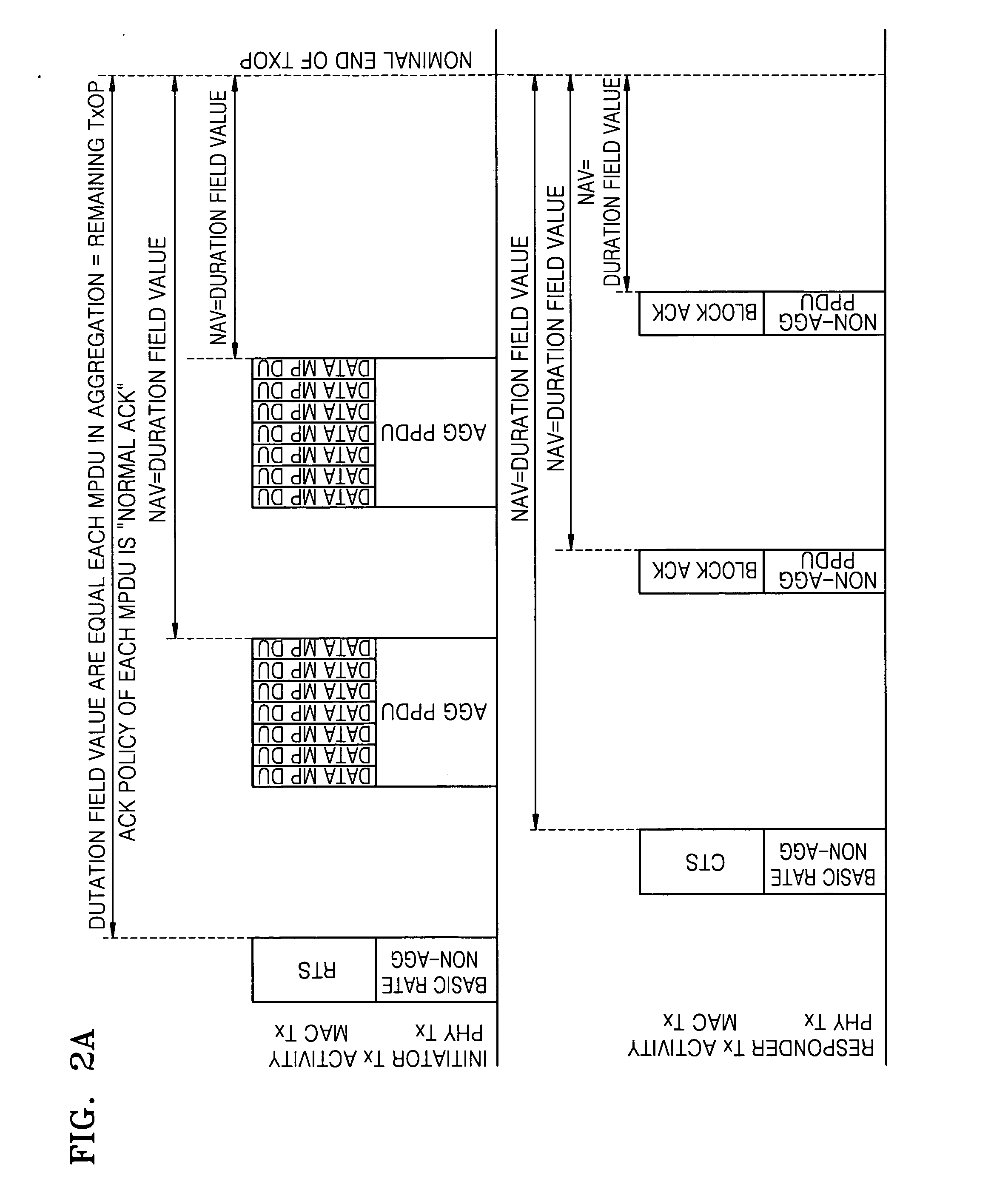Method and apparatus for transmitting control frame to hidden node in wireless LAN
a wireless lan and control frame technology, applied in the field of wireless local area networks, can solve the problems of long navs, waste of channels, and inability to carry out virtual carrier sensing,
- Summary
- Abstract
- Description
- Claims
- Application Information
AI Technical Summary
Benefits of technology
Problems solved by technology
Method used
Image
Examples
Embodiment Construction
[0036]FIG. 5 illustrates a principle of solving a hidden node problem according to an exemplary embodiment of the present invention. Referring to FIG. 5, a station C can receive a CF-End frame sent from a station A. However, a station B cannot receive the CF-End frame sent from the station A since station B is located outside of the radio wave coverage of station A. Thus, the station B cannot reset a network allocation vector (NAV) in synchronization with station C. According to an exemplary embodiment of the present invention, station C, which can communicate with station A and station B, delivers the CF-End frame received from station A to station B, thereby solving a hidden node problem. Preferably, in an infrastructure basic service set (BSS), the CF-End frame is delivered by an access point, and in an independent BSS (IBSS), the CF-End frame is delivered by an IBSS control station that has most recently sent a beacon frame.
[0037] Although the case where a control CF-End frame ...
PUM
 Login to View More
Login to View More Abstract
Description
Claims
Application Information
 Login to View More
Login to View More - R&D
- Intellectual Property
- Life Sciences
- Materials
- Tech Scout
- Unparalleled Data Quality
- Higher Quality Content
- 60% Fewer Hallucinations
Browse by: Latest US Patents, China's latest patents, Technical Efficacy Thesaurus, Application Domain, Technology Topic, Popular Technical Reports.
© 2025 PatSnap. All rights reserved.Legal|Privacy policy|Modern Slavery Act Transparency Statement|Sitemap|About US| Contact US: help@patsnap.com



